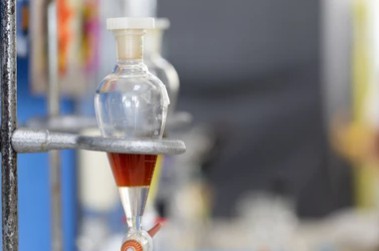Content Analysis and Separation and Purification of Secondary Metabolites in Plant Culture
Many kinds of secondary metabolites will be produced during plant cultivation, and certain physical methods are required to separate and purify the metabolites we need for subsequent processing. Therefore, separation and purification technology is often a key technical step to obtain the desired secondary metabolites.
Principle

Plant cell cultures obtain a wide variety of secondary metabolites, most of which are present in the cells. To obtain plant cell secondary metabolites, the cells must first be disrupted, and then a special solvent should be used. Extract the required secondary metabolites, and then use biochemical separation technology to separate the target product from impurities. Thereby obtaining secondary metabolites that meet the requirements of research or use.
The methods for extracting and separating plant secondary metabolites mainly include cell crushing, extraction of secondary metabolites, precipitation separation, extraction separation, chromatographic separation, crystallization, concentration and drying. The analysis of secondary metabolites includes qualitative analysis and quantitative analysis.
Procedures
- Preparation of cell culture: fresh ginseng cells were obtained by large-scale cell culture (shaker culture or bioreactor culture). The ginseng cells were freeze-dried and weighed W1.
- Preparation of the crude extract: crush the freeze-dried ginseng cells, extract with methanol reflux, concentrate the methanol filtrate to obtain the methanol extract, and weigh W2.
- Suspend the methanol extract with hot water and extract with petroleum ether (60~90°C) to remove weakly polar components.
- Part of the water layer passed through the macroporous adsorption resin (D101) column, washed with water first, and then washed with 30% ethanol. Finally, rinse with 80% ethanol, concentrate the 80% ethanol rinse, and weigh W3.
- Using vanillin-perchloric acid reaction, spectrophotometric colorimetry at 560 nm, the total saponin content in W3 can be determined, and the total saponin content in ginseng cells can be calculated through the relationship between W1, W2 and W3.
- Analysis of the single saponin component in the extract: The single saponin component of the extract can be qualitatively understood by thin layer chromatography (TLC) and compared with the standard. High performance liquid chromatography (HPLC) can also be used to analyze the content of a single saponin component.
- Separation of a single saponin component: through repeated silica gel column chromatography (including normal phase and reverse phase silica gel), and Sephadex column chromatography, a single saponin component can be obtained. The structure of the compound can also be further analyzed through spectral analysis and the physical and chemical properties of the compound.
Related Services & Products
For research or industrial raw materials, not for personal medical use!
